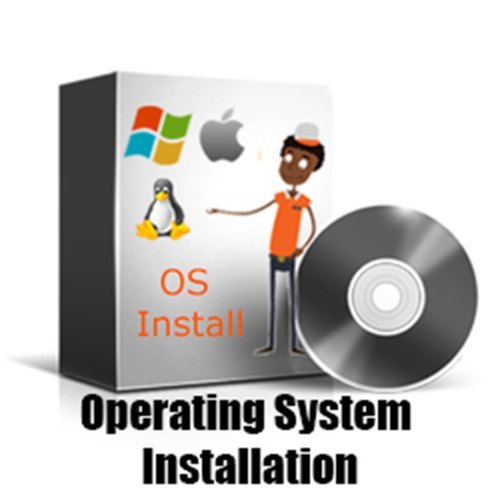Operating System and Software Installation
Here are some important steps to consider when installing an operating system on your computer:
Operating System Selection:
Choose from a variety of operating systems such as Windows, Linux, macOS, etc. to suit your needs and preferences.
Purchase a licensed operating system or download and use a free distribution.
Operating System Installation:
Prepare the media (DVD, USB) or digital files required for the operating system installation.
Check your BIOS or UEFI settings to ensure that your computer starts up correctly.
Follow the operating system installation wizard to configure language, keyboard and other settings.
Complete the installation by following steps such as disk partitioning and selecting the disk or SSD where the operating system files are installed.
Basic Driver and Software Installation

After the operating system installation, get your computer ready for use by installing basic drivers and software:
Driver Installation:
Download and install updated drivers for the motherboard, graphics card, sound card and other components.
For components not recognized by the operating system, download and install drivers from the manufacturer’s website.
Security Software:
Install and update security software such as antivirus and antimalware software.
Configure firewall and other security settings.
If you have not read the Computer Assembly Series Chapter 4 Box and motherboard section, you can get information by clicking on the link.
Essential Software:
Install browsers, office software, media players and other basic software.
Configure user accounts and settings.
Performance Tests and Optimization
Computer Performance Tests
Run various tests to evaluate your computer’s performance:
System Performance Tests:
Run benchmark tests that measure CPU, RAM and disk performance.
Perform gaming benchmark tests that measure 3D graphics performance (for GPU).
Evaluate the power of your system by comparing performance test results.
Stress Tests:
Perform stress tests to measure system stability. Use stress tests especially for the processor and GPU.
Optimization Tips and Software
Pay attention to the following optimization tips to improve your computer’s performance:
Uninstall Unnecessary Programs: Uninstall software you don’t use and unnecessary programs running in the background.
Disk Cleaning and Defragmentation: Improve storage performance by performing disk cleaning and regular defragmentation.
Driver Updates: Keep all your drivers up to date. Especially update graphics card drivers regularly.
Startup Programs Control: Increase system startup speed by controlling programs that start automatically at startup.
Cooling and Cleaning: Clean and optimize your computer’s cooling systems regularly. Overheating can cause performance degradation.
Troubleshooting and Maintenance
Regular maintenance is important to resolve common problems with your computer and maintain system performance.
Common Problems and Solutions
Slowdown Issues:
Solution: Improve performance with disk cleaning and regular defragmentation. Close or remove unnecessary programs running in the background.
Blue Screen of Death Errors:
Solution: Check for driver updates and update as needed. Check Windows error reports to detect hardware problems.
Connection Problems (with the Internet or Other Devices):
Solution: Restart the modem or router. Check wired or wireless connections. Update your drivers.
Virus and Malware Problems:
Solution: Update your security software and run regular scans. Avoid unknown e-mail or download links.
Hardware Problems (Heating, Noise, etc.):
Solution: Regularly clean and optimize your computer’s cooling systems. Check for noisy fans or components and replace them as needed.
Computer Maintenance Tips and Cleaning
Physical Cleaning:
Regularly clean the computer case from the outside. Prevent dust accumulation.
Clean accessories such as keyboard and mouse. Regularly remove and clean the keys of your keyboard.
Clean your monitor with suitable cleaning materials. In particular, use cloths that clean the screen without scratching it.
Cleaning System Files:
Regularly clean up unnecessary files and temporary files. You can use the Disk Cleanup tool in Windows.
Empty the recycle bin regularly and permanently delete unnecessary files.
Program and Application Maintenance:
Uninstall programs you don’t use. Update frequently used programs regularly.
Clear browser history and cookies regularly. Check internet history and delete unnecessary files.
Security and Backup:
Regularly update your security software and run scans.
Regularly back up your important data. You can back up using an external storage device or cloud services.
Hardware Checks:
Regularly check your computer’s hardware. Review connections and components.
Make sure moving parts such as fans and cooling systems are working properly. If there are heating problems, take the necessary precautions.
By practicing these maintenance tips regularly, you can improve the performance and durability of your PC. In addition, by detecting potential problems early, you can avoid bigger problems.